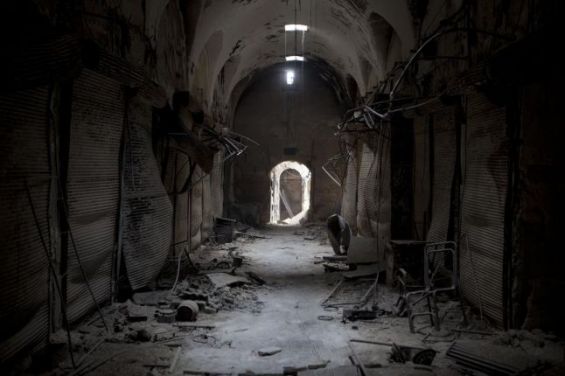By night refrain from uttering their names and even if you have to, just make sure that you are not mocking their supernatural abilities and their dark history.
As children, we have all been advised to follow these instructions, while attentively listening to uncanny and mysterious tales about the angry deceased lady who would appear at anytime before anyone and the jinn sultan who lays near Morocco’s top summit.
Now and as grownups, some of us are eager to know about these scary, bone-chilling figures and buildings that we never dared to explore. Some of these existed and others are just abandoned structures that made headlines in the past, but they certainly are Morocco’s spookiest tales.
Shamharush, the Jinn sultan
He lived a long and prosperous life, before choosing Morocco for his eternal rest. The legend says that Sidi Shamharush the Flyer, or Tayar as many locals like to call him, lived for twelve centuries. Yes, he is a jinn, but a jinn like no other. In fact, he is one of the seven sultans of jinns and he lays right next to the Kingdom’s highest peak, the Toubkal Mount.
His shrine is located near Aroumd, a small Berber village in the Ait Mizane Valley of the High Atlas Mountains. Venerated by the inhabitants of the region, accounts surrounding the Sultan of Jinns reveal that, centuries ago, they «set up a shrine for him at the base of Toubkal», as they believed he «causes rivers to flow, traverse their areas, fertilize their land, and enables their cattle to quench their thirst», Moroccan scholar Mohamed Maarouf said in his book «Jinn Eviction as a Discourse of Power: A Multidisciplinary Approach to Modern Moroccan Magical Beliefs and Practices», (BRILL, 2007).

But why did Sidi Shamharush come to Morocco and is he still alive? On to the hair-raising parts. According to «Fuqha», cited by Maarouf, the jinn died circa 1898. «The myth goes that Shamharush retreated there (Morocco) to spend the last centuries of his perineal life», he wrote.
But to those who believe in the Sultan of Jinns, who would have «converted to Islam during the Prophet’s time and became a a’alim (scholar) and a qadi (jurist) of jinns’ tries», say that he is still alive and his hallow spirit is still roaming the Atlas Mountains, waiting upon travelers that come to visit his shrine to seek a cure.
But if you consider visiting his shrine and spending a night there, you may want to think twice about the colors you will be wearing. Accounts claim that the Jinn leader loves two colors and nothing but these two colors : white and green. Mind your colors or suffer his wrath.
Aisha Kandisha : Beware she is everywhere
She is angry at all men and she would do anything to drag them to her and possess their bodies or just frighten them to death. Women can rest assured, when it comes to her, she only wants to take revenge for old wounds that tore her body and her soul.
Some accounts suggest that she lays near Azemmour, a city that was once held by the Portuguese. But to others, she is everywhere, unpredictable and she can come at you when it’s dark at night, when you are vulnerable in isolated areas and by your own.
To Deborah Kapchan, Aisha is a «figure in the form of a woman». In her book «Traveling Spirit Masters: Moroccan Gnawa Trance and Music in the Global Marketplace», (Wesleyan University Press, 2007), Kapchan quotes American novelist Paul Bowles who lived in Morocco for years. To him, Aisha Kandisha «was married to 35,000 men in Morocco».

She is one of «the most powerful and dangerous female jinn». Many people, especially men, said that they saw her in isolated areas, while driving at night and that she would lure them in a way that they couldn’t resist.
But to Moroccan writer Fatima Mernissi, this is how it is believed Aisha would prey on her unfortunate victims. The female jinn is «repugnant precisely because she is libidinous». «Her favorite pastime is to assault men in the streets and in dark places, to force them into sexual intercourse with her, and ultimately to penetrate their bodies and stay with them forever», Mernissi added.
So, if you happen to be a man, roaming the streets alone and in the dark, be careful, you never know when you could stumble on the succubus.
Qara Prison and its endless corridors
It is a prison like no other. One of Morocco’s first correctional facilities, intended to host Christian inmates and other captives. But the legend of the prison that lays underneath Meknes, started when the city’s founder Moulay Ismail forged this enigma.
«It is said to have been designed by a Portuguese prisoner promised his freedom by Moulay Ismail if he managed to build a prison capable of holding 40.000 prisoners», recalls the book «Morocco» (Michelin Travel Publications, 2001). The prison was eventually named after the Portuguese prisoner and architect «Qara». But this name refers now to terror, mystery and probably a haunted maze that none would be able to escape from if they were unfortunate enough to be put there.

With its endless corridors, countless cells and walls that have never seen the sun, it is easy to lose the way back home once inside this centuries old prison. The legend goes that many people, including some French researchers, stepped inside this facility and never made it out.
Beside the doom architecture designed to make anyone abandon all hope once there, there are many who claim the place is haunted and full of jinns and ghosts of the forgotten inmates. To this day, no one knows how many inmates died inside those walls. Hundreds or maybe thousands... just be aware their souls might still be there waiting for a visitor to lash out their anger at.
The haunted sanitarium
Meknes sure is a fascinating place, as, not very far from it, there is also a sanitarium, one that hosted several patients in the past. But the big building located in the middle of the woods, near Azrou, is now an abandoned tower where the strangest things happen at night according to terrified accounts.
Ben Smim, the anti-tuberculosis hospital, was built starting in 1946 while Morocco was still under French control. The sanitarium was a French man's dream come true : the man had tuberculosis and was told by doctors that there was no cure to his disease.
Historical accounts say that the man left for Morocco to enjoy the last days of his life traveling around the country. He stumbled upon the area and sojourned there. After a while, miraculously he realized that the weather and the good vibes had cured his illness. He therefore decided to return to Azrou to build the hospital.

At the time the facility was a huge project, it had 400 beds and consisted of a 185-meter long building that contained spacious rooms with high-end equipment. In 1955, the hospital was inaugurated but 20 years later, it was shut down due to a lack of funding.
The hospital, since then, went on to become the most sinister building in the area : abandoned and left to rot, the place became a dreadful area. Many people attempted to get inside and debunk the accounts suggesting that it would be a ghosts’ sanctuary, but curiosity killed the cat, eh ?
Many adventurous Youtubers dared to explore the hospital with their cameras to document the chilling experience following a series of online challenges. None of them could catch it on camera but the looks on their faces once inside says it all : beware you who dare to step inside the infamous «hospital in the woods».




 chargement...
chargement...












